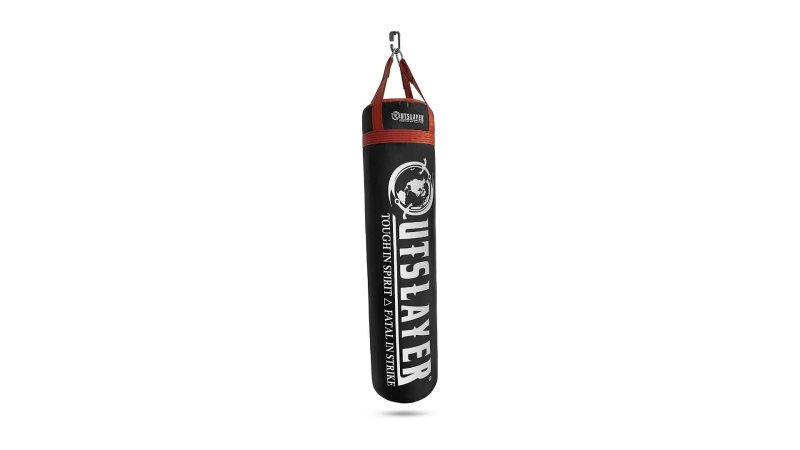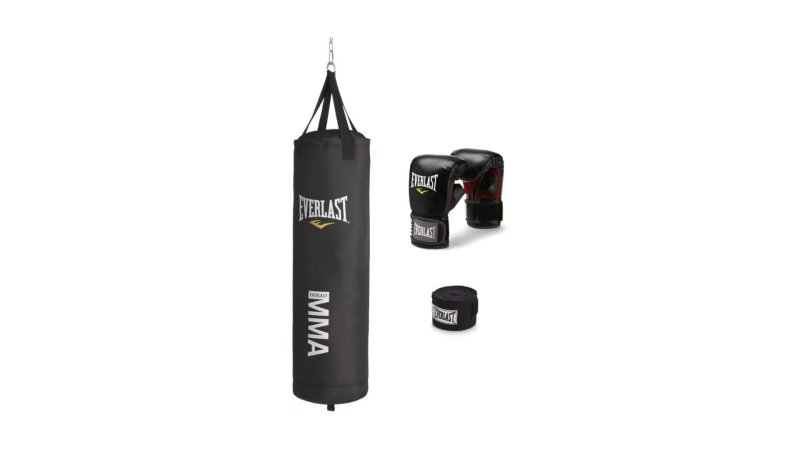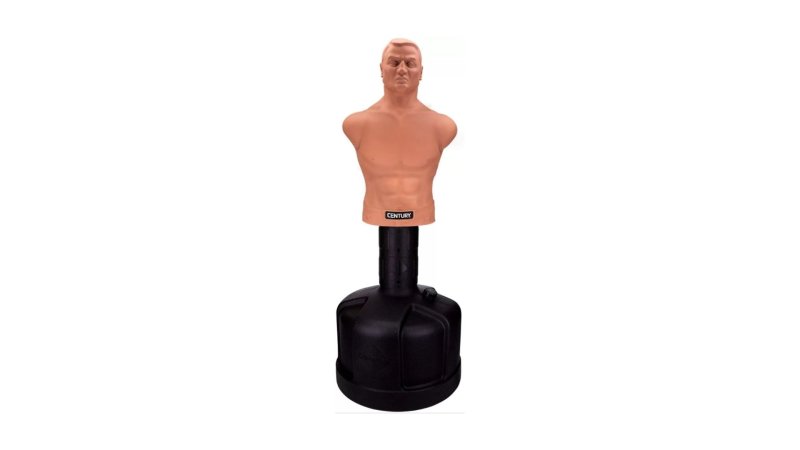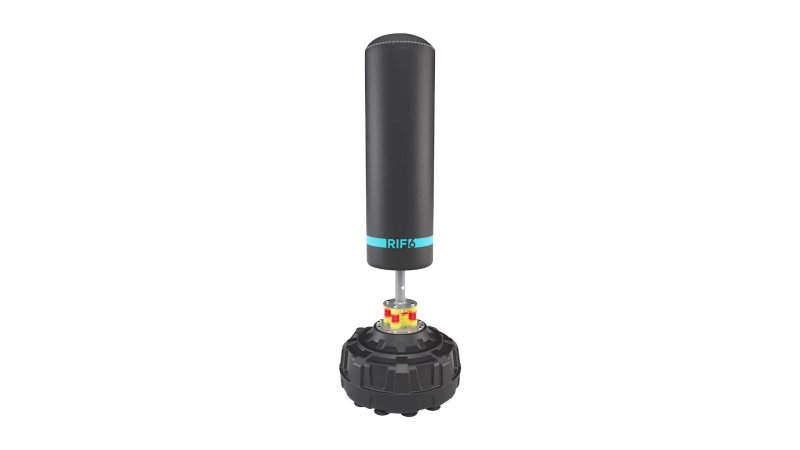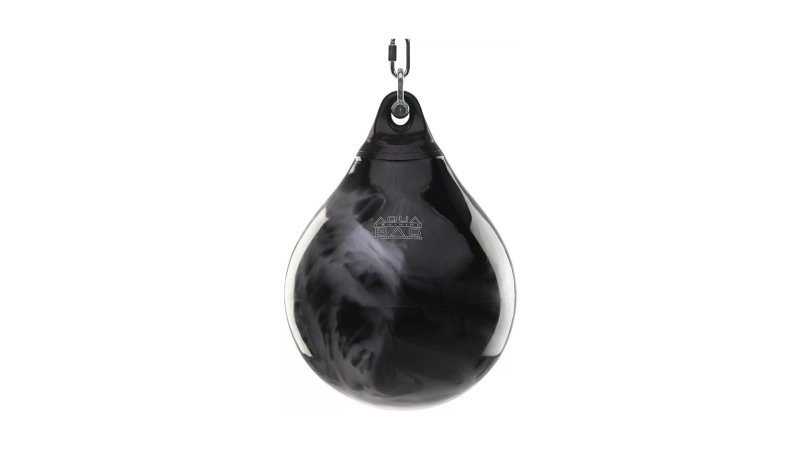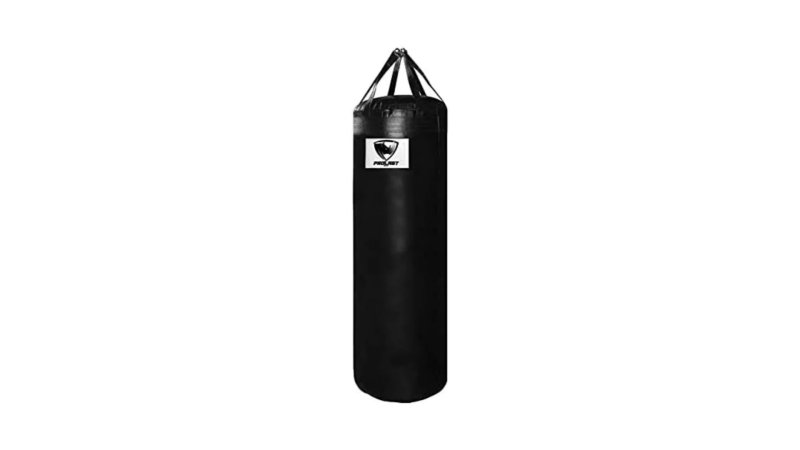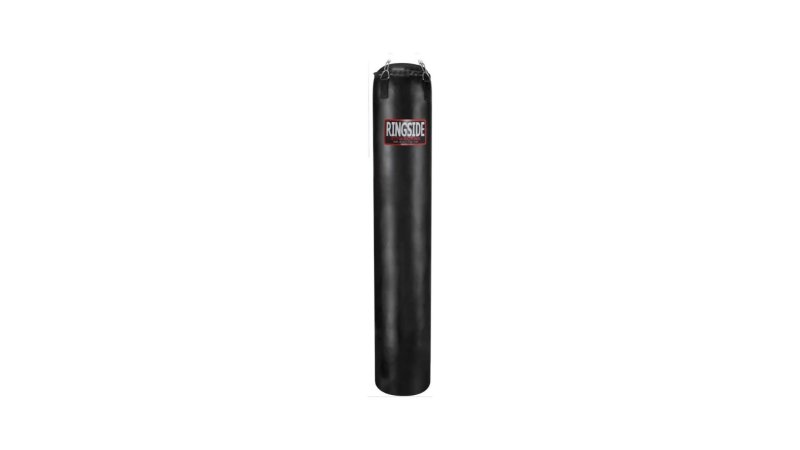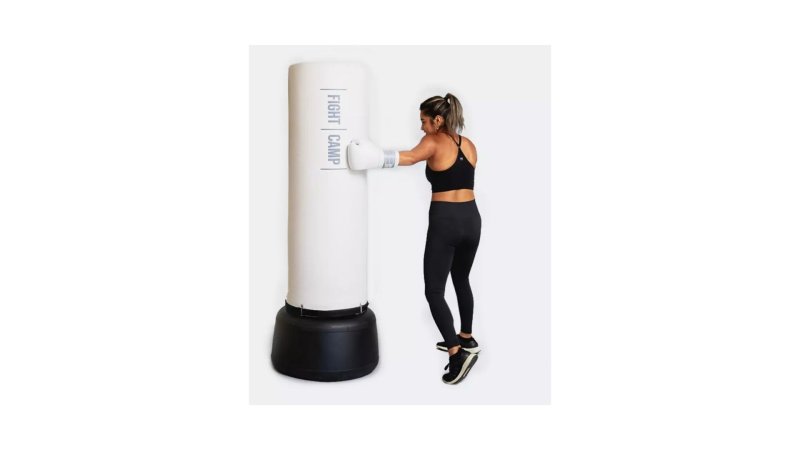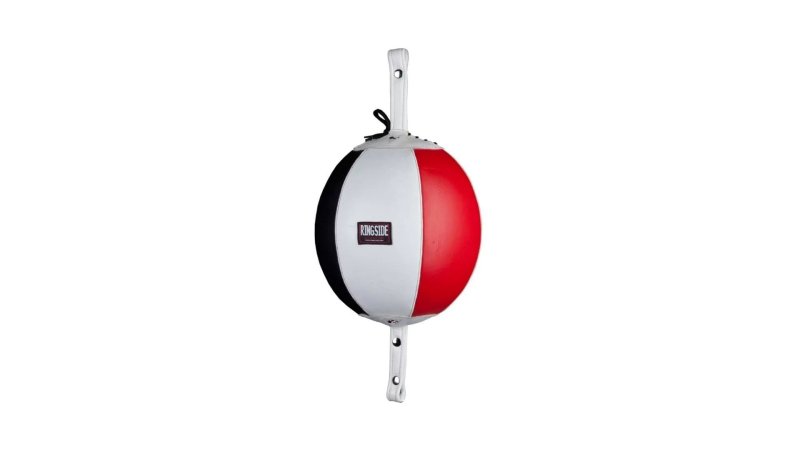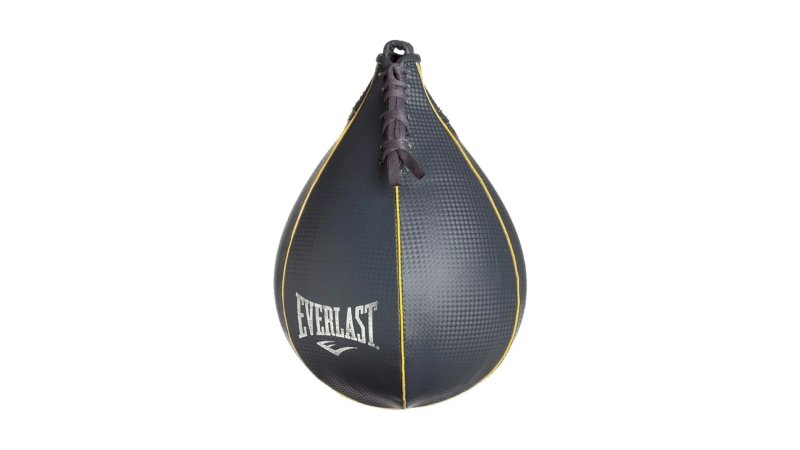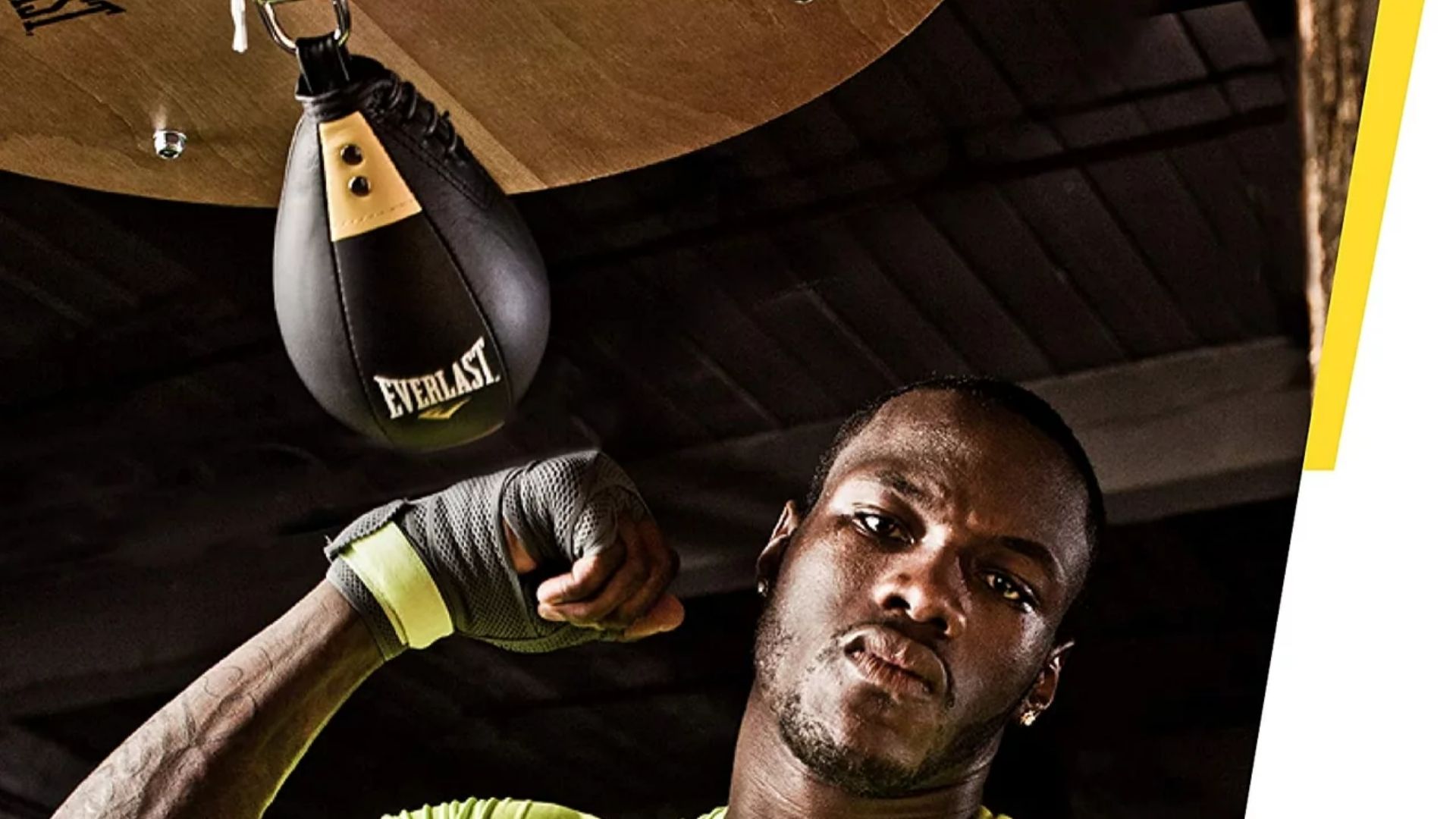

We may earn revenue from the products available on this page and participate in affiliate programs.
If you’re like me and hate running but need to do something for cardio, a punching bag might be the solution for you. Replace that 10 or 15 minutes on a treadmill with a few three-minute rounds dancing with the bag. Get your heart pumping and unleash your frustration on 100 pounds of leather and sand swinging from the ceiling.
In this article, we’re giving you a look at the best punching bags on the market. Here’s what you need to know.
Best Overall
Outslayer 100 lbs Heavy Bag
Pros
- Unbeatable durability
- Works for kicks and punches
- 10-year warranty
Cons
- Expensive
Specs
- Weight: 100 pounds
- Length of bag: 55 inches
- External material: Vinyl
Best Value
Everlast MMA Heavy Bag Kit
Pros
- Great price
- Adjustable chain to customize height
- Compatible with anchors and stands
Cons
- Lightweight bag offers less of a workout
Product Specs
- Weight: 70 pounds
- Length of bag: 41 inches
- External material: Polycanva
Editor’s Choice
Century B.O.B.
Pros
- Realistic design
- Soft design doesn’t tear your hands up
- Adjustable height
Cons
- Expensive
- Difficult to set up
Product Specs
- Weight: 270 pounds when filled with sand
- Length of bag: 60 to 78 inches tall
- External material: Vinyl
Best Free-Standing Punching Bag
RIF6 Free-Standing Punching Bag
Pros
- Shock-absorbing base allows it to rebound
- Perfect for indoor sse
- Simple setup
Cons
- Need leg protectors for kicks
- Expensive
Product Specs
- Weight: 195 pounds with sand
- Length of bag: 68.9 inches
- External material: PVC synthetic leather
Best Water-Filled Punching Bag
Aqua Training 120 Pound Heavy Bag
Pros
- Easier on the joints
- Modular with sensors, stands, and stabilizers
- Quick and easy setup
Cons
- Not as tall as standard bags
- Tough to kick
Product Specs
- Weight: 120 pounds
- Length: 18 inches
- External material: Thick-walled vinyl
Best Heavy Punching Bag
Prolast 200 lbs Heavy Bag
Pros
- Incredibly durable
- Cotton-filled
- Professional grade
Cons
- Expensive
- Niche design
Product Specs
- Weight: 200 pounds
- Length of bag: 60 inches
- External material: Rip-Stop
Best Punching Bag for Martial Arts
Ringside Muay Thai Heavy Bag
Pros
- Tall
- Easy to implement multiple moves with
- Affordable
Cons
- No floor anchor option
- Height makes it tough to use a stand
Product Specs
- Weight: 100 pounds
- Length: 72 inches
- External material: Powerhide
Best Smart Punching Bag
FightCamp
Pros
- Provides workouts
- Measures performance
- Stores easily
Cons
- Expensive initial investment
- Expensive subscription required
Product Specs
- Weight: 350 pounds
- Length of bag: 67 inches
- External material: Vinyl
Best Double-End Bag
Ringside Double End Bag
Pros
- Affordable
- Multiple sizes
- Reinforced loops
Cons
- Included bungee wears out quickly
Product Specs
- Weight: 1.08 pounds
- Length: 5, 7, or 9 inches
- External material: Leather
Best Speed Bag
Everlast Everhide
Pros
- Affordable
- Durable design
- Easy to use
Cons
- Not professional-grade
Product Specs
- Weight: 6 ounces
- Length of bag: 9 inches
- External material: Synthetic leather
Why you should trust us
I credit punching bag workouts for getting me into shape ahead of boot camp. Since then, I have always kept one hung up inside of wherever I live, from the barracks to my house. These days, I have three different bags set up inside my home gym. Over the years, I’ve learned what works and what doesn’t in a punching bag.
In this guide, I included bag options for a variety of combat sports, but what they all have in common is that they can take a beating. One of the main things to think about before buying a bag is durability and design because you’re purposely going to beat the hell out of it, so it needs to stand up to that abuse.
In researching this subject, I examined gear I own and use, interviewed multiple martial artists, and read other independent reviews. What you see in this guide is the result of that effort.
Types of punching bags
While there are different styles of punching bags, which vary by how you’re supposed to strike them, the types of punching bags we’re covering here involve how you set them up.
Hanging
A hanging bag is most likely what you picture when you think about a punching bag. It hangs from an anchor from above and dangles using chains or straps. Most hanging bags will swing during your workout and force you to move accordingly. The really heavy ones — usually designed for power punching — need more force to move, so they won’t swing as much.
Additionally, if you have a bag lighter than 70 pounds and you don’t want it to swing, or you have something like a double-end bag, you should anchor it to the floor as well as the ceiling.
Standing
A standing punching bag eliminates the need for an anchor point or hanging stand. They are stationary bags that are built onto a base that stabilizes them. That base is filled with sand or water to ensure not even One-Punch Man can knock it down.
Standing bags can be a great alternative to hanging bags when your space is limited or you might live somewhere you are not allowed or cannot safely anchor a punching bag. A standing bag can be tucked into a corner and only pulled out when needed.
Key features of punching bags
When you start shopping for a punching bag, you should consider weight and length, internal material, and finally shape and design.
Weight and length
The weight and length of the bag determine how much resistance it offers and what body parts you can engage with. Heavier bags offer a tougher workout and more resistance to each punch. A heavier bag allows you to throw heavy and hard punches without sending the bag swinging away.
The length, or height, determines what moves you can bust out. A short bag works well for just punches, elbows, and the like, but longer or taller bags allow you to work in kicks and knees alongside your punches and elbows.
At the same time, this requires more room to mount, a higher cost, and heavier-duty anchors or taller stands to work and function.
Internal Material
The inside of a punching bag contains one of three materials: sand, cloth, or water.
- Sand — or gravel — is heavy and hard, but also the least expensive.
- Cloth, or compressed cloth, makes the best material for a standard punching bag because it doesn’t anchor or harden.
- Water allows for more absorption at impact and is less injury-prone than other materials. The downside is potential leakage, and still, water gets gross long-term.
Note that the inside of a speed bag or double-end bag contains a rubber bladder, which you pump up like a basketball.
Shape and design
The design and shape of most bags is a cylinder, and a cylinder works great for normal punches and kicks. However, they’re not as intuitive for strikes like uppercuts. Some punching bags use an angular top or overly angular design that allows for a bevy of different blows and opens up the versatility of a punching bag at an increased price.
Benefits of punching bags
When you spend a few rounds hitting a punching bag, you can get a full-body workout that improves both cardio and strength — and not to mention stress management.
Cardio
Well, well, well, big surprise we’d end up here again. Yep, hitting the bag and working your mitts helps increase your cardiovascular endurance, burns calories, and keeps your ticker ticking. A punching bag does a miraculous job of giving you a cardio workout without having to put miles under your belt.
Combative training
Throwing a punch is a lot like driving a stick shift. It’s something everyone should know how to do and something that takes deliberate practice. A punching bag gives you something to actually punch and hit. This allows you to practice your punches and improve your defensive capabilities.
Hand-eye coordination
Learning how to throw a punch is a great way to improve your hand-eye coordination. Working the bag will easily improve your hand-eye skills and give you an edge in all manners of sports and life.
Improved strength
Hitting the bag is a light resistance workout that can improve strength. You’d be surprised at how sore a good bag session can leave you. Hitting the bag will work your arms, chest, back, shoulders, legs, hips, and even your core.
Punching bags pricing
Budget
Budget-grade bags can cost anywhere from $70 to $100 and are typically 50- to 70-pound bags. They are typically made from poly canvas and filled with a combination of sand and gravel-like material with a fibrous inner material. These are perfect for casual workouts and at-home setups.
Mid-range
These bags are where we get into the higher end for home hitters. For $100 to $200, you can find a nice hanging or standing bag weighing anywhere up to 150 pounds. They’re suited for serious workouts and hardcore at-home gym owners.
Premium
For more than $200, you can find extra heavy bags, bags made from higher-end materials like vinyl or leather, or smart punching bags, which are built with sensors that guide or track your progress. They’ll be able to take some serious abuse by fighters of any skill level. It’s a buy-once cry-once kind of deal.
FAQs on punching bags
You’ve got questions, Task & Purpose has answers.
Q: Which material is best for punching bags?
A: Mechanically compressed textiles resist moisture and implement an even design for solid punches. It resists anchoring and hardening over time.
Q: What punching bags do professionals use?
A: Professional fighters use a variety of bags — heavy bags, double-end bags, speed bags, power punch bags, etc. — and the specific brand they use varies depending on where they train. Some fighters use whatever bags their gym carries or use bags provided by a sponsor.
Q: Are gloves necessary for punching bags?
A: Yes. You should wear gloves or some kind of protection if you plan on striking a bag for exercise. If you don’t, you risk damaging or injuring your hands or wrists.
Q: Can you kick a punching bag?
A: Yes, you can kick a punching bag, but know that some heavy bags are specifically designed for kicking, so the best practice is to understand how to use your equipment before doing something you’re unsure about.
Q: Do punching bags build muscle?
A: Not really. A punching bag will help you tone muscle in addition to giving you a cardiovascular workout, but it won’t help you build muscle like, say, weightlifting.
Q: Are MMA gloves good for punching bags?
A: Yes, but you should understand your equipment before doing something you’re unsure about. Boxing gloves typically offer more padding and protection for your hands and wrists than MMA gloves, which are designed for grappling as well.
Our gear section
Travis Pike is a former Marine machine gunner who served with 2nd Battalion, 2nd Marines for five years. He deployed in 2009 to Afghanistan and again in 2011 with the 22nd MEU(SOC) during a record-setting 11 months at sea. He’s trained with the Romanian Army, the Spanish Marines, the Emirate Marines, and the Afghan National Army. He plays in the great outdoors of Northwest Florida and enjoys good beer, sharp knives, and long walks in the woods.
